Category Archives: Weekly Posts
Scrunchie? DONE-chie.
I can hardly believe it.

Well actually, that’s a bit dramatic. After figuring out the ins and outs of the machine, I knew I’d be able to figure out this relatively simple project in the sewing world. Here’s a time lapse of the whole process!
Here’s the breakdown of how it went:
- First, I bought a pack of fabric. It came with 5 different floral styles. I also bought knit elastic, which I ended up having to cut in half to meet the 1/4 inch requirement from the instructions. To be safe, I went with about 1/2 inch wide elastic to give me (and the needle) some wiggle room for errors.
- I let my daughter choose the fabric she wanted as the scrunchie would be for her. Naturally, the first fabric she chose was claimed as a blanket for her baby, so we went with option 2 (toddlers, am I right?)
- I cut the fabric according to the specifications by Damjana at AppleGreen Cottage (here’s the link to the video I mostly followed)
- I sewed the narrow end of the fabric to close that seam
- I then folded the fabric in half lengthwise and sewed that seam shut. This is where I ran into issues
- everything started fine, but eventually, the needle just kept going through the same point in the fabric and the fabric wasn’t rolling along under the presser foot as it had been before. So, I stopped, pulled the fabric away, cut and tied the loose ends, and tried again. I did this probably 5 different times. Eventually, as nothing appeared to be wrong with the bobbin thread, I figured that maybe it was an issue with thread tension and adjusted that. This seemed to do the trick and I was able to finish that long seam.
- Then I turned the fabric right side out
- Time for the elastic. The video I was watching didn’t specify the length of the elastic, so I had to look to Treasurie on YouTube to help me out with this. This tutorial video was a bit more detailed than the other one, and came in very handy.
- I cut the elastic slightly less than the 9 inch suggestion from Treasurie, as the fabric I cut based on Damjana’s measurements was smaller than Treasurie’s. I went with 7.5 inches. As mentioned before, I had to cut that elastic in half lengthwise so it wasn’t so thick.
- I then pinned the ends of the elastic together and was instructed to sew those together. I was about to go and find a needle and do this by hand, but I figured what the heck and let ol’ Singer give it a whirl. It worked fine!
- After that was done, I removed the pins and tucked the raw edge of the fabric inside the edge with the seam. It was then time to sew the ends of the fabric together (the last step). Honestly, I kind of figured this was not the correct way to do this step. I used the machine, which sewed the elastic to the fabric, stopping it from being able to move around within the loop of fabric. I checked out some of my other scrunchies, and all of the elastics inside of them were able to move freely around inside the fabric. I wasn’t sure how I was going to do this without also sewing the elastic, unless I did it by hand. From the videos, there was no mention of doing this step by hand, so I decided to just do a row of stitches right through the fabric and elastic. I figured once it was done, the material is all scrunched up anyway, so it wouldn’t matter terribly, especially for my first try. My harshest critic would be myself and my 3 year old, so I wasn’t all that worried.
- Did that, tied up the loose ends, and admired my creation.
- I ran upstairs and showed my daughter. She graciously modeled it for me:

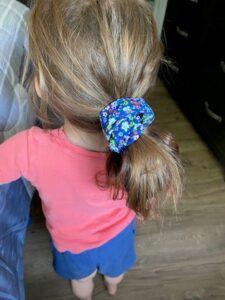

Thinking back over the last 6 weeks, it’s hard for me to believe that I went from having no idea where to even begin to creating something that will truly be useful for me. I think that’s what motivated me to want to choose this as my learning project-the practicality. I want to be able to sew the odd hole my daughter (and likely future daughter) inevitably get in their clothes, or even sew them something fun like a costume in the future! The scrunchie thing is cool because I could create a scrunchie that matches another fabric that can be worn, like a shirt or a dress or something like that. Finishing this has me thinking about what else I can create. I’m envisioning little drawstring bags for the kids’ tiny toys. I haven’t delved into this world all that much. I’ve explored TikTok, Instagram and YouTube, and I’m sure I’ve just scratched the surface of what is out there in this category.
I also have some final reflections on the learning process itself; ideas that I want to remember and apply to student learning when I get back into the classroom:
- Learning something new is hard, BUT when taken one step at a time, it is way less frightening and overwhelming. Throughout this process, as evident in my previous posts, there were definitely some challenges. At the beginning, when I thought about where I wanted to get to, I almost wanted to give up before I started because it seemed impossible. However, when I actually sat down to start, and just took it one step at a time, it wasn’t daunting. There seemed to be a solution for every problem, even if it extended the time it took to complete that step. I need to remember that for students, they’re learning a whole bunch of new things, every day, all the time. They must feel overwhelmed at times too. As their teacher, I should be reminding them to gently refocus on the first step in whatever it is they are trying to accomplish and not look too far ahead.
- Learning something new is rewarding and provides a feeling of accomplishment. Were there times I wanted to do anything else but sit down and learn to sew? Yes. Did I want to quit? Yes, a few times. Am I happy I didn’t? Definitely. I feel a sense of pride in what I was able to achieve, no matter how small it may seem. I think about how scary it was to take this machine out of the box and set it all up, but I did it, and I’m proud of that! I want to provide more opportunities for students to think about how learning new things makes them feel. I think this will involve slowing down a little and encouraging them to pay more attention to the effects of learning on confidence, self-esteem, and motivation to continue learning.
- It doesn’t always have to go as planned to be a valuable experience. My initial end goal was a bucket hat. Yeah…maybe one day. But with the challenged I faced in this project that slowed down my process a bit, I realized that that project was something to strive for down the road. While it’s important to set goals and have them be as specific as possible, I think there’s something to be said for allowing a bit of room for change and the things that happen that are out of our control. We probably shouldn’t be so rigid with our learning goals and plans that it prevents us from learning something unplanned that is perhaps just as meaningful. Open-ended learning projects like this are tricky in the classroom setting for two reasons: one, they are difficult to assess, and two: kids can get lazy and get away with it. However, the pros still outweigh the cons in my opinion as there is a lot of value and significance in independent learning.
I want to thank anyone who has followed this journey and taken the time to read about it. I know we are all very busy at this time of year as educators and I appreciate the time you’ve taken to get this far if you’ve gotten this far. I hope your experiences were meaningful to you and successful in whatever way that might mean.
Thank you Katia and thank you classmates; congratulations to those of you who are finished your Masters and best of luck to those continuing your educational journeys. Have a wonderful, well-deserved summer everyone!
The Cost of Open (and Closed) Education
I thoroughly enjoyed our last class and chance to hear Alan Levine share a little bit about the topic of open education (full disclosure – I typed “Adam Levine” at first and thought… wait a minute…).

Prior to hearing him talk about it, I didn’t really know how to define it. I knew very little about it. I suppose I could have taken a good guess at what it was, but it was definitely a weak definition prior to our discussion.
Alan offered the definition of open education as basically the belief that education is a common good, and everyone should have access to it. Open education resources, then are those materials that are created and made available for anyone to use, without barriers of cost or access.
I immediately thought of a resource base that I use frequently – TPT. While many resources are freely available for download with an account on this site, much of the higher-quality materials must be purchased. Some plans, units and resources can be upwards of $30. One thing Alan said, with a bit of a wondering tone, was that sellers on TPT who create and put their resources up for sale don’t really make all that much money. This made me curious; I felt like I’d seen the same creators over and over again when searching for resources. Teaching with a Mountain View is a seller that came to mind. Upon browsing her page, I found that she has 870 products available. I found it hard to believe that someone like this wouldn’t make a notable amount of money with this many quality products for sale. I also read this article that notes that over 300 sellers on TPT have reached the $1 million dollar mark in sales. Of course, as with any sums large as this, the “take home” is far less, based on a variety of factors. However, based on this and a couple of other resources and blogs I stumbled upon, the profits that some sellers on TPT take home are worth mentioning.
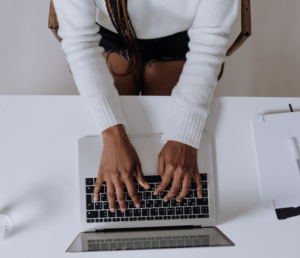
The article I linked above talked about how money was tight for some people and they turned to TPT as a way to ease some of the financial stress during unpaid summer months. I posed this question in class, but I still have been wondering: if all resources were “open”, would people be less motivated to create quality products?. To my understanding, the belief of open education is that creators of content are driven largely by the love of knowledge and the desire to share it with everyone and anyone. The cynic in me just finds it hard to believe that some of the self-made millionaires, who have created incredible resources for purchase on TPT, would have poured countless hours into creating high-quality products just for the goals of open education. If people could not create and sell resources, how would this change the landscape of a place like TPT or other businesses that sell educational materials? This is absolutely not to say I don’t believe in open education. This is just a conundrum I’ve been reflecting on over the past week and it kind of breaks my brain.

As Alan continued his presentation, the conversation shifted to some of the obvious positive things about open education, such as “open data” and its role in world betterment. Alan also talked about “open access”, explaining that more knowledge fuels more knowledge. He discussed the irony in having publicly-funded academic research journals requiring a payment for members of the public to eventually read and have access to, which is just kind of messed up.
Listening to Alan speak was lovely. One of the last things he said in his presentation was that “it shouldn’t be hard to become educated”. He explained that he learned a lot of what he knows through open education so he’s just passing it on. His casual, easy-going tone helped communicate his message and passion for open education and certainly inspired me to think more about it myself.
Reflecting on this has me thinking about my own learning. I can use my learning project (sewing) as an example. As a result of “open” education, I was able to learn how to set up my machine and practice the basics. Without platforms like YouTube and TikTok providing me with free videos and instructional materials, I’m not sure where I would have been in my progress. A little more broke, I suppose, with all of the other resources I access freely online without thinking about that help me learn and accomplish things (recipes for baking and substitution ideas, gardening tips and tricks, guitar chords and tabs for thousands of songs, etc.)
At risk of contradicting my considerations about open ed. resources demotivating people to create quality products, all of this open education wondering leads me to this: open education is a concept, a collection of beliefs, a worldview, and a set of values about knowledge and how it should be shared. Saying this begs the question: what is the purpose of creating something in the first place? Yes, people create to express themselves or to complete a task, but if these creations have the potential to spread awareness and knowledge about something, should that be limited or restricted? Open education promotes the common good, and maybe that’s enough to keep people motivated to keep doing what they’re doing, regardless of a paycheck.

Social media activism – a critique of my voice in online spaces
This week’s class focused on social media activism and we were given several opportunities to consider and voice our opinions on the topic. My initial thoughts going into the presentation were: I do not share much of anything online. I am much more of a consumer than a producer of social media content. Must I go out of my comfort zone to start promoting social justice in online spaces?
Do I believe in fighting for social justice and equity? Of course. Do the things I say and do reflect this? I’d like to think so. But the question remains…is it enough to be passively involved in striving for social justice, or should I be doing more?

The first reading I chose to peruse as I pondered this topic is Katia’s blog post as the title part “silence speaks as loudly as words” caught my attention. “Silent” is essentially me online, so I figured it was worth a closer look. I appreciate her reminder of the role that privilege plays in justifying an individual’s responsibility to speak up in online spaces. Do I have a voice? Do I have the ability to network and let my voice be heard by many others? Does my position in society give my voice and opinion value and the power to influence change? This was an important post for me to read; it reminded me that I am privileged in many ways and I do believe in my responsibility to use it for something good.
Next, I did a little research of my own and found this article titled “Online activism isn’t just slacktivism” by Carolyn Ali at UBC. I clicked on this one because at one point or another I have definitely felt like most online activism is just slacktivism! Reading through this article, I found a lot of points that paired well with some of Katia’s thoughts and examples in her presentation, such as how slacktivism can actually be a gateway into activism, and that if people are intending to do good by changing their profile picture and sharing articles, motivations and attitudes are in the right place.
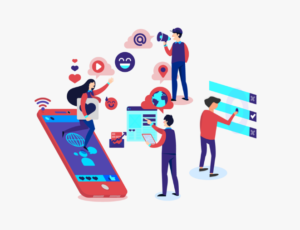
I can safely say that in a relatively short period of time, my mind has changed on social media activism. I no longer think of it as a “cop out” and am definitely more motivated to use my platform to stand up for the things I believe in. However, as with so many things in life, this is easier said than done.
Another point that was brought up in class this week was the impact of a teacher’s actions and behaviours on their students. Again, this is something I’ve always believed, but for some reason I have never extended it to my presence and identity online. It’s one thing to tell students what is important, but it is significantly more powerful and impactful to show it through actions and modelled behaviours. I can think of plenty of other ways I model my values and beliefs to my students, so when I really think about it, I’m not sure why I would think modelling proper, meaningful use of my privilege in online spaces unnecessary or optional. I think it was also brought up in class that what we don’t teach tells our students a lot about what we value, and in extension, what we don’t say, online or offline.
As I mentioned earlier in this post, I don’t say much online. Even offline, I often take the role of listener, sitting back and taking it all in. I think there can be a lot of value in this as other people and personalities like to talk. And talk. And talk…and it can get pretty noisy. I think about my own staff and previous staffs I’ve been a part of and how important it is to strike that balance of personalities and strengths in fostering a strong and successful network of colleagues. HOWever, when it comes to issues of justice, equity, and doing what we can to point out things that are not right in society, maybe there’s no such thing as too loud.
This week’s focus on social media activism has me reflecting on what I might consider speaking up about in online (and offline) spaces and wanting to challenge myself to voice what I care about, even if it is uncomfortable or difficult for me.

All the things you learn while trying to learn something else
An update on my “learn to sew” project:
Spoiler alert, we haven’t gotten to the sewing. Yet.
I do have some exciting (well, at least to me) progress to share though! To start off, I searched the internet high and low, manual by my side, and found these videos/people to be the most helpful in my first task, which was threading the machine.
First, I found this video by MrEdSnapshot on YouTube. It was one of the only ones I could find that gave a detailed overview of the machine I was using (probably because it is quite old). This one didn’t show me how to thread the machine or actually sew, but it did give some helpful close-ups of all of the places I would eventually need to become familiar with, such as all the nooks and crannies that the thread winds through, as well as the inside of the bobbin case. This was extremely helpful as the video I chose to primarily help me thread the machine was on a different machine that looked a little different from mine!
The next video helped me to properly thread the machine. Of course, at the time, I didn’t know it was done correctly, but follow up with my mother in law confirmed that I indeed did it right. Massive shout out to Hailey Stitches on YouTube for this absolute gem of a tutorial. The whole not having the same machine as her thing was a non-issue as I followed along her simple, clear explanations.
Then this happened:
The bobbin. It was actually winding. I followed Hailey’s lovely instructions up to this point, and with great hesitancy, slowly pushed my foot down on the pedal. It was magical.
So I kept on going, until I reached the last step before I heard those words I’d been waiting for – “Now, you’re ready to sew”.
I ran upstairs and grabbed some paper towel. Why? TikTok videos I’ve been following use paper towel sheets to practice stitches on, and I figured that was my safest bet! I got it all set up to push through the machine. I pressed down the pedal. The needle started moving up and down, and the piece of paper towel was feeding its way under the presser foot. I was so excited and thrilled…until I reached the end of the paper towel, and… nothing. There was no thread, no stitches. I thought maybe I had threaded the bobbin part wrong, so I took that out and watched the video again and redid it. Then I tried again. I got maybe half a stitch, and it got all tangled. NOOOOOOOO I was so so close!
I tried one more time to rethread the spool thread and the bobbin thread to no avail. I quickly Googled why a correctly threaded sewing machine might not be making stitches in fabric, and it gave me a few suggestions to do with thread tension and fabric thickness. I thought, then, that maybe the paper towel was just too thin and the thread wasn’t “catching”. So then I did what any normal person would do. I ran upstairs, gabbed an old pair of shorts and cut a piece out of them.
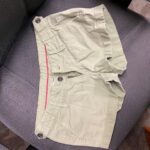

Alas, the fabric wasn’t the problem. Or the tension. After all that hope, I felt a little defeated. I kind of just sat there for a while, contemplating what to do next.
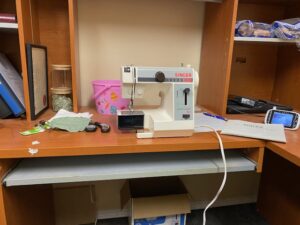
I thought about calling grandma, but it was likely she was already asleep, and this was likely to be a longer conversation. So I decided that the following morning, I would ask my mother in law, who also sews, if she could take a look at the machine and see if she could figure anything out. She reported back later the next morning, saying she couldn’t get it to work either! But, she did say the machine was threaded correctly, so that felt good at least. She suggested I try a sharper, newer needle, as this had been a solution for her with a past project (which was actually her hemming a dress of mine). Quick shout out to my MIL here, the real MVP. She takes care of our kid during the week and saves us from all sorts of disasters, including derailed learning projects.
So, with confirmation that I have done everything right up until now, my next step will be trying a new needle. If that doesn’t work, I may have to switch up my learning project a little. This is not to say that I haven’t learned anything from trying to learn how to sew! In fact, here’s a few things this journey has me reflecting on so far:
- Getting started on something new really is the hardest part. I was extremely intimidated by this endeavor, and as I followed my way through the manual and instructional videos, one step at a time, I realized that it really wasn’t all that bad, and that I was perfectly capable of completing the task. Our brains tell us all sorts of lies about what we can and can’t do.
- Learning is frustrating. What an important reminder of how it feels to be stuck! We see this with our students all the time, and it’s easy to become impatient when all of your different attempts to help are fruitless. This process has me thinking of my students in their times of frustration and have more empathy.
- Asking for help can be hard, but so helpful. I’m definitely a more “figure it out on my own” type of person. I’d rather try a handful of different things before asking for someone else’s assistance. Which, sometimes, is really just a dumb waste of time. I’m a bit stubborn and wanted to be able to learn how to sew all on my own, if possible. But asking my MIL for help, and having her clear up some of my questions and suggest a new solution, was huge! It transformed what would have been a dead end to one more path I could follow.
As I look ahead to next week, I will plan simply to get a new needle and try again. If that doesn’t work, I have a few options I’m considering. A, I could borrow someone’s sewing machine that actually works. B, I could attempt sewing by hand, and learn a more proper way to do this besides the way I taught myself, or C, I could change lanes altogether and focus on learning something new, even in the short amount of time we have left in class.
We’ll see how the week unfolds! Until next time.
A Curious Skeptic’s Guide to Twitter
This is a tough one for me. I’ll start off by saying that I am not an active Twitter user; in fact, I had to fire up my account from the ashes, which was untouched and unused, since my last Ed. Tech. class. I suppose my greatest challenge with this platform is that it is simply not an integral or routine part of my role as an educator. That being said, I know there is value in actively using Twitter to seek out and share resources, learn, and stay up to date with best practices, and I am giving it a fair shot this week to convince me that it’s truly something I’m missing out on.

I wonder what an active Twitter user, fully immersed in the culture of sharing and consuming digital content on the regular, would want to say to me in defense of their standpoint (if this is you, I’d love to hear a few counter-points to my resistance)
Here are some questions I have that might contribute to my hesitancy:
- Can Twitter make me a better teacher? What is it about this platform in particular that is better than other methods and places of consuming and sharing information?
- I already feel like there’s not enough time in the day to juggle work, family, personal well-being and sleep, so is making room for regular tweeting worth it?
- Echo chambers always seem to come up as a challenging issue in online social spaces; how would Twitter be any different, as I would ultimately choose to follow the types of accounts and users that align with values and beliefs I already have? Isn’t this something we should be trying to avoid doing?
- What if it’s simply just not for me? Does not having a Twitter account move me down a notch on the teacher greatness scale? And if so, why?

I’m not trying to be cheeky with any of these questions. I’m genuinely curious about the answers I might receive and if they would help push me toward embracing Twitter as a vital educational tool.
Currently, I simply just don’t use Twitter much! However, I do use Instagram regularly, and follow educational accounts such as the.unteachables and primarilyjoyful. I suppose that with other social media platforms, such as Pinterest, and regular conversations and interactions with teacher friends and colleagues, my professional learning network isn’t lacking enough to need to add something new.
In the spirit of learning new things, I started up my account, updated my profile information, and began following a number of users from this article that Katia shared with us earlier in the course. I also starting following other accounts that were recommended based off of the ones I was recently clicking to follow.
Over the course of the week, I made it to 40 accounts I am following (which is a lot considering I think I had below 10 prior to this). I’ve added three tweets and spent time browsing the tweets and retweets of others, curious of what I might stumble across.
As a bit of a side note, if I did start using Twitter more, I don’t think I would ever be someone who tweets a lot. I don’t share often on any of the other social media platforms I use regularly, so suddenly tweeting and retweeting things daily would feel pretty uncomfortable for me.
During my time using Twitter, I was happy to realize that it really can be a one-stop shop for staying in the loop with best practices in education, new and top tech ideas, resources, PD opportunities, and even some humour sprinkled in to add some comic relief to the madness and insanity that our jobs can be sometimes.

I think that the more time I would spend using Twitter, the more I’d come to value it and regularly use it in my teaching (and learning). It would certainly be a slow build, as I wouldn’t jump right in to tweeting multiple times a day and suddenly following 500 accounts. As I wrap up this school year with my current class of grade 7s, and soon begin another year of maternity leave, I’m thinking about how I can still continue to grow and get better. Perhaps Twitter is one of the ways I can do this.
TikTok about feeling old!
For my social media platform exploration choice, I chose TikTok. As someone who regularly uses Instagram, Facebook and Snapchat, I figured this was the logical choice. It’s the one app in this category that I feel just “makes sense” for me to check out, plus it’s definitely the app of choice among my grade 7 students. Becoming familiar with a culture they are immersed in can’t hurt in building relationships and connections!
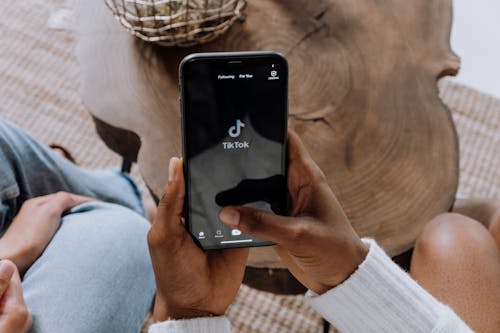
The first step was creating an account. I quickly realized I had downloaded the app before, but I couldn’t remember why or when. Once I was all signed up, I truly had no idea where to start, so I just started swiping up through videos, stopping and watching ones that intrigued me. To be honest, I wasn’t stopping all that often. I was a little confused about why all of these videos in the “For You” section were often not things I was remotely interested. The content all felt like it was way off my interests or sense of humour. I was having trouble relating to basically everything I was seeing and ultimately just felt confused. This is the point that I started feeling like maybe I was too “old” for this community.
Of course, I understand that all of the content I was seeing is based on algorithms. And I understand that the app was just doing its best to guess what content I would engage with. But this got me thinking – where does an app like this, that’s driven by algorithms, start with new users? What information are they privy to to help guide their decisions?
I checked out this article from the New York Times to become a bit more familiar with the “behind the scenes” of TikTok. Here’s a bit of what I learned:
- TikTok’s parent company is ByteDance, a Chinese technology company that operates a variety of content platforms
- It serves more as entertainment than as connection to friends, a central function of an app like Facebook
- TikTok analyzes how much time users spend watching each video to inform the content that users see in the future
- A kind of disturbing and unsettling quote by Guillaume Chaslot who said “[t]his system means that watch time is key. The algorithm tries to get people addicted rather than giving them what they really want,”. This gave off some serious Social Dilemma vibes.
I then did a bit more perusing of some articles focused on the algorithmic heart of TikTok. Some of what I read touched on the controversy around TikTok and Donald Trump, as well as trying to categorize the app as either positive or negative overall.
The Bright Side
As time went on, and I spent more time engaging with the app, I found myself stopping to watch videos much more often. My “For You” content was starting to feel much more like it was actually for me. I was laughing out loud at some of the videos and shared several with my sister, with whom I share a very similar sense of humour. In those moments I was really quite appreciative of TikTok for providing me with some feel-good content that made me smile and chuckle.
I also started following a few users who posted content for and by teachers which were recommended by some of my ECI831 classmates. I could quickly see how these short videos and reels could provide handy tips and tricks for all things teaching and learning. farmerlovesphonics on TikTok made me especially excited as my daughter is definitely on the brink of being ready for some pre-reading learning, and this user provides some great tips and guidance in this area. This is just a glimpse of what a platform like TikTok can provide for educators, parents, caregivers and the like – a bite-sized, to-the-point example of something to try.
…And the less bright side
I think my opinion on social media for youth is pretty solidified, and my experience with exploring TikTok has only served to support my existing views. A couple of my students were showing me their daily screen times. They were looking at the previous Sunday. One of their times showed over 15 hours, and the other showed over 11. Now I know I’ve spent far too much time on my phone before, and seeing it show over 6 hours definitely makes me feel guilty and honestly a little sick. But seeing that my students are spending over double this in a day is alarming, to say the least. I know this is common for middle year students in this day and age, but seeing the actual time on their screens just hit a little different.
It’s no doubt that kids and teens are more impressionable than adults, and this is why I think the use of apps like TikTok should be monitored, and moderated, for young people. Just like it has for me these past couple of weeks, Tiktok can absolutely provide some feel-good, mood-boosting entertainment. But reading about how algorithms are at work behind the scenes and why they function the way they do leads me to be cautious and skeptical about anyone spending the majority of their waking hours on this app.

I think the safest play when it comes to young people and social media use is encouraging open conversations, teaching proper use and respectful online communication, and setting boundaries. Age limits exist for a reason, and I don’t think social media use should be an exception. Teaching students and children how to do this themselves is an excellent idea, of course, but I think providing some degree of protection and guidance during years of major development is just as important.
“Nothing worth doing is ever easy”
Welp, I did it. I completed step one of my learning plan. That is, I retrieved the sewing machine from its home in the corner of the closet.

And then, I took it one step further – I took the machine out of the box.
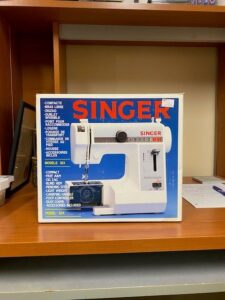


That’s enough for one day. But seriously, just doing this helped me to solidify a better plan. Because until I opened the box, I really had no idea what I was working with. So, here is my plan!
- I will research online if I am able to find and purchase the materials/pieces I need to use the make and model of this machine. If not, I may have to take this learning project in a different direction, but fingers crossed it is possible.
- I will read the manual with the machine in front of me and order/collect any parts/materials I’ll need.
- I will search for video tutorials to help me get started with the basics. I anticipate that even after reading the instruction manual, I’ll need a video visual. The lingo will probably be way over my head. Bobbin? Spool?
- Practice different stitches on scrap pieces!
After I am comfortable at step 4, I will look for a simple pattern I can follow to sew… something more than just a square of fabric. I’ll also make sure to ask my g-ma for help along the way. I’m sure she’ll appreciate me involving her in the process. I think she’ll be pretty excited when she finds out that I’m giving this a go.
Social Media & Me
What is my relationship with social media? Well, if I am about to define my relationship with it, I should probably solidify my personal definition of it first. When I think about social media, the first thoughts that come to mind are Instagram and Facebook. TikTok pops into my mind shortly after, alongside platforms I use less frequently, such as Twitter. For some reason, I put Snapchat and Pinterest in a separate side-category, since I equate Snapchat more closely with messaging apps such as Facebook Messenger, WhatsApp, or iMessage.
Reading through this week’s articles and browsing a few dictionary definitions definitely broadens my personal definition of social media. Most definitions include words like networking and sharing, as well as terms or phrases that include the sharing of various media, including text. Social media spaces are those that foster digital networks and virtual communities. I suppose, then, that the WhatsApp group I am in with my in-laws is social media after all (which should not be surprising based on the volume of GIFs that comprise this group message).

Expanding my definition of social media also allows me to include some of the valuable tools and platforms I use in and for my classroom. It makes me think about when I was offered my first classroom teaching position – a grade 4 class. As I began setting up my classroom, I spent a considerable amount of time online researching ideas. I came across this Instagram account. I took a lot of Brittany’s ideas and incorporated them into my classroom, some of which I still use today in my grade 7 classroom, a whole decade later. TPT is another platform I use regularly to find resources, among so many other educators around the globe. I could easily list more examples, but I think this does a sufficient job illustrating the role that social media and PLNs (Professional Learning Networks) play in my role as an educator.
EC&I 831 will be a good reminder of the value of social media in creating diverse learning experiences that would be otherwise impossible. I was not especially familiar with the term Professional Learning Network until perusing the articles listed for this week. Before I share my thoughts about them, I just want to note something. I’m a bit of a “PLN wallflower”; I prefer to watch from the sidelines and collect ideas and resources as they spark my interest. I am a lot more comfortable and content to consume information rather than to produce it or share it myself, even if I believe it to be valuable or interesting. I guess that maybe I just think there’s already a lot of… noise in the digital world and I don’t feel the need to make it any louder.
All that said, I absolutely see the value in PLNs. This blog post touches on how they offer so many more ideas for how to remedy teaching challenges that arise, such as students who struggle to read. The limited number of age-alike classes in an individual teacher’s building who could offer suggestions or advice is no longer problematic thanks to professional learning networks. The article also talks about the challenges of individual schools as “echo chambers” which is an important point; PLNs break down these walls, inviting a collection of ideas, diversifying learning and eliminating what might otherwise be a single-lens perspective on a topic.
The EdTechnica article talks about the social learning involved in PLNs and how much more immersive and extensive the learning experience is, discussing how “PLNs can support educators’ affective, cognitive, identity, and social growth”. It also points out the challenges of PLNs, two of which particularly stood out to me: their overwhelming nature and the inability to always assess information for quality and correctness.
If you’ve made it this far, I should perhaps finally answer the actual blog prompt for you. What is my relationship with social media? How has it affected my personal/professional life in positive/negative ways?
I enjoy social media. I use it every day. In my personal life, it helps me connect, unwind, and be creative (shameless plug for my little side gig (post link here). In my professional life, it simply makes teaching easier and more authentic, broadening my perspectives and diversifying the content I share with my students.
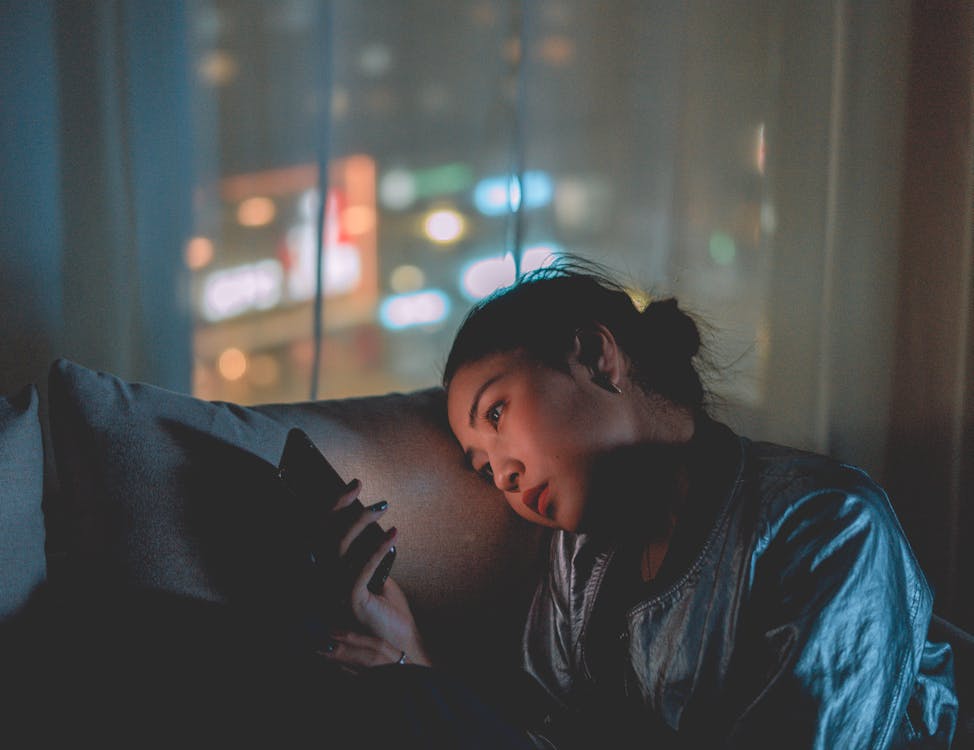
As for the negative effects of social media, I imagine my thoughts are going to be similar to those of my classmates. Social media can be addictive. And as with anything good in life, moderation is key. This can be a struggle for me, more-so in my personal life than in my profession. We see our students struggle to use social media in moderation, a greater challenge to remedy as they are so deeply immersed in digital culture. Yes, finding and maintaining a healthy balance of social media use is… complicated. Overall, however, if used in a healthy, balanced way, I do believe the good of social media outweighs the bad. I think it certainly can be a bit of a monster if guidelines are not set and followed on an individual basis regarding consumption and production of content, but in terms of what it allows and makes possible for connection and better learning, it isn’t worth abandoning. Maybe it’s like what I keep telling my daughter about the beast in Beauty and the Beast – as much as he looks and acts like a monster, at his core, he’s not really a beast at all.